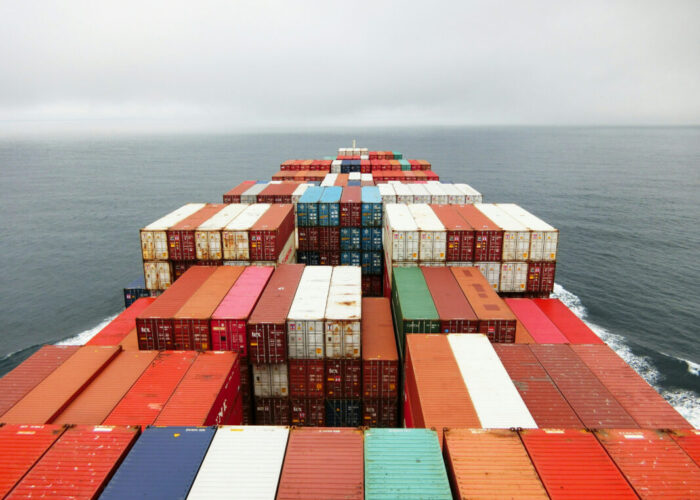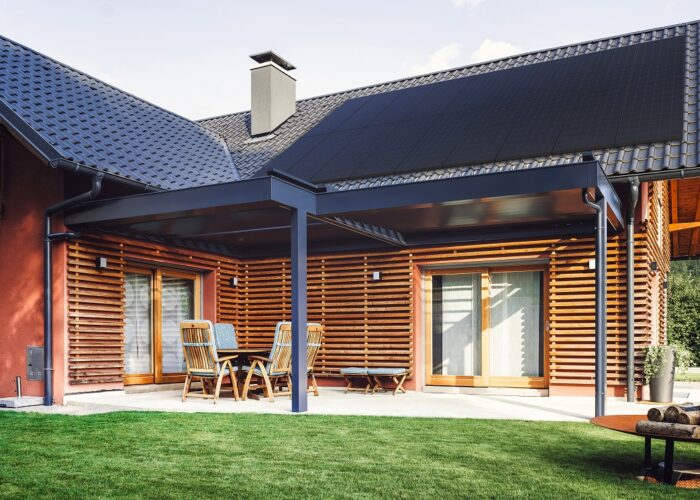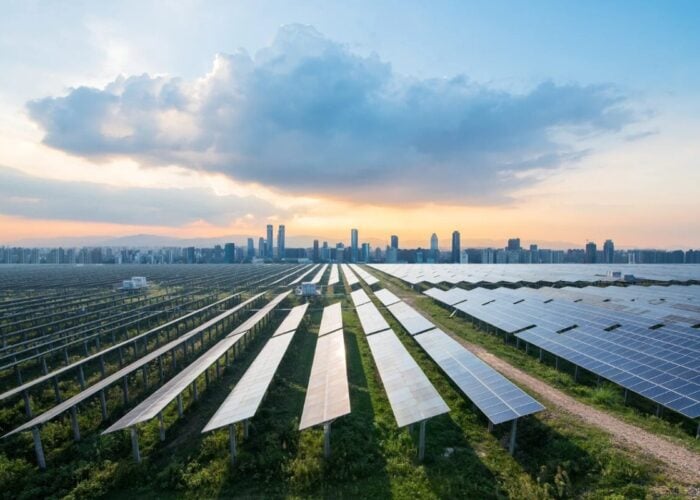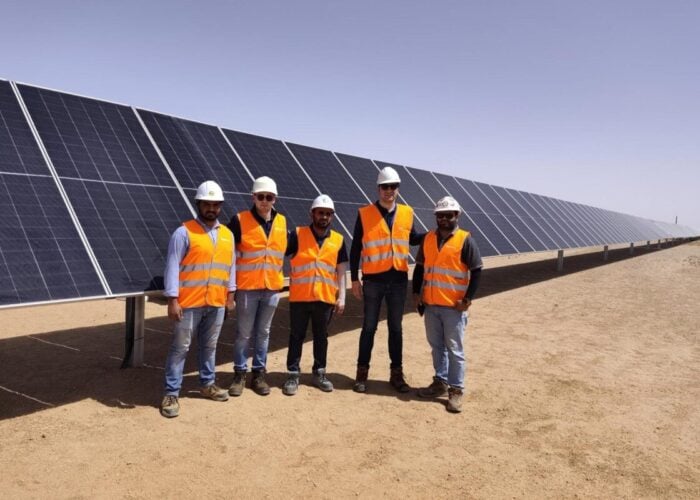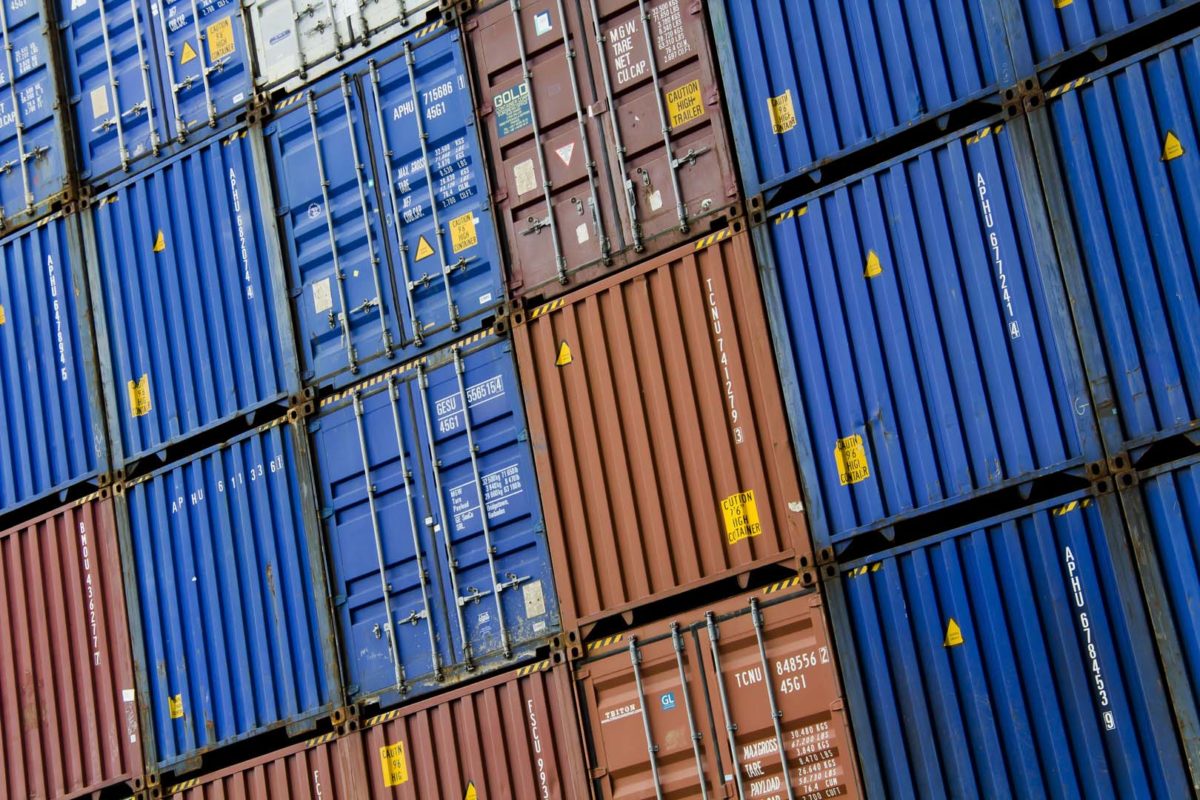
Firms that obtain their equipment from convoluted overseas supply chains can learn from corporate investors, now seeking to reduce the volatility in their stock portfolios. Risk reduction is a rational response to irrational times.
In the long term, our current crisis will require companies all over the world, in virtually every sector, to improve at assessing their supply chain risk amid global uncertainties — whether a trade war or a pandemic.
Try Premium for just $1
- Full premium access for the first month at only $1
- Converts to an annual rate after 30 days unless cancelled
- Cancel anytime during the trial period
Premium Benefits
- Expert industry analysis and interviews
- Digital access to PV Tech Power journal
- Exclusive event discounts
Or get the full Premium subscription right away
Or continue reading this article for free
This period of time is an uncertain one for renewable energy developers and installers, as electricity demand falls, supply chain uncertainty persists, tax credits expire, and most of the C-suite executives work from home in their pyjamas. Dealmakers stuck at home have other concerns to juggle besides signing new deals. The economic recovery, when it comes – and it will – may be quick and V-shaped, or drawn-out and U- or L-shaped.
In either scenario, the world will certainly need more clean energy.
Corporate and policymakers’ commitments to renewable energy and carbon emissions reductions haven’t changed, and the industry remains committed to deploying more clean energy. Tax credits typically receive last-minute extensions. Solar and wind projects can add jobs to support local economic development.
Pension funds, infrastructure funds and insurance companies will still be willing to finance projects at a reasonable cost of capital. With fossil fuel prices dropping, supermajors will still have money to invest and they’ll seek better rates of return.
Energy analysts at IHS Markit, Blackrock, and elsewhere predict that ever-cheaper solar power will continue selling well to the residential market through the crisis.
Enough of these tailwinds will remain intact for renewables to be a bright spot in the eventual recovery. Under one scenario, pent-up demand floods our sector with capital and appetite for shovel-ready projects by next fiscal year, or at worst by the year after. A lot of planning is happening now.
Keeping those projects shovel-ready then becomes the challenge. Many of the equipment or subcomponents for racks, inverters, transformers, and batteries required originate in China, but there are still solar modules manufactured in Southeast Asia, South Asia, and Korea due to the existing trade case. Raw material sources, factories, and shipping must all remain up and running to keep these facilities operating 24/7. The future of project deployments, however, depends on a skilled workforce able to leave their houses.
As the solar industry has skyrocketed in the last decade, this diversifying supply chain has helped drive down prices to undreamt-of levels. Managing all those suppliers successfully has become a critical building block of industry leaders’ success.
Solar, wind and storage developers can survive and thrive after the COVID-19 outbreak with lessons from international sourcing experience that has come before, including SARS, H1N1, the solar tariffs, and trade wars. Among those lessons are:
Diversification: Diversify your supplier base, especially when the market is tight
Every procurement professional will tell you always to dual source, depending on your volume. We are encouraging folks to consider working with not just two, but three suppliers across a diversity of projects, rather than single sourcing your entire portfolio.
There are different ways to slice and dice risk. China, seemingly now past the epidemic’s first wave, is reportedly resuming factory production and will continue to dominate the supply chain of wafers, cells, and modules. Malaysia has locked down all but essential industries through April 14 but will hopefully soon be back in business. We could see subcomponent manufacturing starting up in new regions such as Cambodia.
You’re not going to observe the industry supply chain shift to the US in any meaningful way in the short term. This change wouldn’t be cost-effective, and the timeline to establish a US supply chain equivalent to Asia’s would be way longer than this disruption will be (regardless of projections). There have always been far more installation jobs in the US than in manufacturing, so the hype related to manufacturing job creation is not worth the effort.
Decisions on increasing more overseas sources require extensive due diligence and cost research on a more streamlined approach to subcomponent manufacturer partnerships. They require more risk and aggressive pricing with emerging suppliers. And these new suppliers may need extra time to convince banks of emerging suppliers’ bankability credentials, if previous financing requirements were dependent on one stable supplier. The case for supplier diversification just became stronger.
Flexible supply chains: Research fully, and partner with strong international suppliers that have local supply chains and do not depend only on one subcomponent supply base such as China
Many suppliers selling to the US already produce elsewhere in Asia to avoid the tariff regime. However, these manufacturers often use OEM capacity they don't control or own, and fail to build localised supply chain relationships. Localising a supply chain can take years when the previous PV manufacturing environment is immature, so diversifying a subcomponent supplier’s basis is crucial.
Executive relationship building: Maintain strong relationships at the executive level of suppliers
Our standard rule used to be face-to-face meetings on a quarterly basis, with at least two visits to headquarters each year – especially as Asian cultures thrive on face-to-face interaction versus impersonal phone calls or emails.
We’re now living through a time when such intensive travel is not possible, obviously. Consequently, buyers of upstream solar and storage equipment should seek out advisory partners with a headquarters in Asia and already-established deep relationships at the executive level for a decade or more.
Investigate the depth of a technology roadmap
Study how your potential supply partners have deployed advanced technologies over the past five to 10 years, and whether or not they have a track record of success.
If buyers don’t have a 10+-year track record in the industry, then independent advisors who are not paid by suppliers can help validate each supplier’s technology roadmap and their track record of maintaining commitments. Analyse longitudinal data, and the supplier’s previous ability to respond to technology trends.
Independent quality validation: Engage experienced third-party inspectors who follow internationally accepted practices
Inspectors can screen out defects that can threaten performance or safety. The proper training and evaluation of this staff includes rigorous time in numerous factories as well as compliance with the US Foreign Corrupt Practices Act, as delineated in a comprehensive corporate ethics policy. By following these criteria in evaluating independent third parties, one can ensure to maintain a safe distance from supplier manufacturing uncertainty and ensure that Quality Assurance work is conducted in an unbiased way.
New suppliers may face challenges in embracing new technologies or manufacturing at new facilities. So the QA scope should be validated and customised based on the defect history of each supplier – especially during periods of factory ramp-up or new technology adoption.
Amid all the uncertainties posed by COVID 19, as during previous disruptions, companies should continually prepare for and navigate an ever-expanding global supply chain which evolves based on many factors. A natural consequence from this shifting landscape will be a flight to quality suppliers at scale with localised supply chains.
Recovery is coming. Meanwhile, the word of the day is: Diversification.

